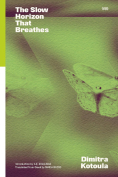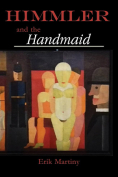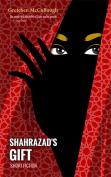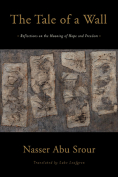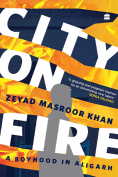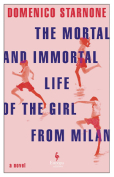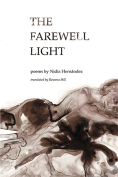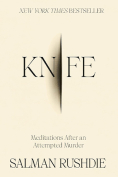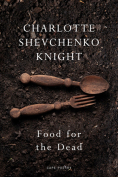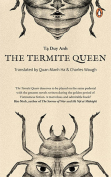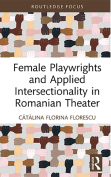The Mortal and Immortal Life of the Girl from Milan by Domenico Starnone
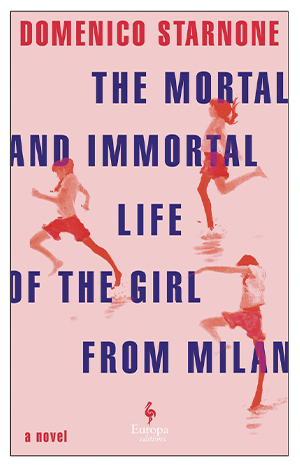 Trans. Oonagh Stransky. New York. Europa. 2024. 144 pages.
Trans. Oonagh Stransky. New York. Europa. 2024. 144 pages.
Lifelong repercussions of an obsessive, unrequited love mingle with lyrical ruminations on death, language, and literature in Strega Prize–winning Domenico Starnone’s slim, flawless gem, The Mortal and Immortal Life of the Girl from Milan. In thirty-two brisk, retrospective vignettes, Mimi (short for Domenico), the septuagenarian narrator, reflects on the scope of the “thick tangle of childhood memories,” his university days, and the vicissitudes of old age.
The triggering emotional event that provokes the vivid imagination of the aspiring poet occurs when he is “between the ages of eight and nine.” He lives in a fourth-floor apartment in Naples with his family, including his widowed maternal grandmother, Nonna. Their home overlooks the opposite third-floor balcony of his voyeuristic passion—a girl about his age with “pitch-black hair.”
He spends entire mornings observing her as she pretends to be a “wind-up ballerina, hopping here and there with her arms above her head and every so often doing a pirouette.” It looks to be a precarious activity when she climbed onto a “stone parapet, stood up, and started dancing . . . up and down on the narrow edge.” For the romantic-minded Mimi, danger and death are already tied to beauty. He must save the girl from herself and imminent doom.
Mimi wishes to “cast off [his] actual self, transform into a handsome, clean, new person, capable of uttering sweet poetic words straight out of [his] primer, settle on her balcony, within those sounds and colors, and live forever by her side, asking her every so often and very politely, may I please touch your braids.” He fears for her life. Premonitions of dying permeate his perceptions. He watches her “beautiful little body against the sunlit windows, her arms above her head, twirling boldly, so exposed to death . . . ready to throw [himself] into the abyss with her if she were to fall.”
Death is quickly linked to literature. For Mimi, the girl’s actions evoke the legend of Orpheus and Eurydice. It is clear he identifies with Orpheus, who “travelled to the underworld to bring back his girl-friend.” Nonna has told him haunting stories about the underworld, the place beneath a marble cover with “a lock, a chain, and a bolt, because if people don’t close it . . . all the skeletons down there that still have a little flesh on them will try to sneak out. . . . Once you raise the cover, you have to pull it shut behind you right away, then go down some steps . . . into a stormy cloud of dirt with thunderbolts and lightning and rain that comes down mountains and fills the air with powdery dust.” Mimi is certain that the entrance to the “pit of the dead” is under a “rectangular slab of stone” in the courtyard or main entrance to their building.
Mimi has a cohort in his explorations, a childhood friend, Lello, who lives in the same residence. He is the one responsible for the nickname “the girl from Milan.” He is also responsible for Mimi and the girl first meeting in person after a game of “courage/chicken” goes awry in a bicycle accident that leaves Mimi with an ankle injury and a bleeding leg. While he is splashing water on his wound at a fountain, she appears, asking, “Can I take a sip?” Mimi is overcome with an edgy erotic vision of beatific loveliness, “her teeth so white and straight that they’ve continued to shine in my memory my whole life. The water splashed across her lips and dripped down her chin while she peered at me closely, a hint of either mischief or curiosity in her eyes.” He is “anesthetized by love.”
Soon, however, Mimi learns that Lello, too, is struck by her presence and announces he will marry her. Being rivals in love leads to a friendship-altering duel based on another of Nonna’s tall tales, this one about her deceased husband’s flaming walking stick with a sword attached to it. Following the duel, the girl from Milan goes on a villeggiaturo (summer vacation) from which she never returns. The rumor is that she has drowned. The boys must determine their own destinies.
Mimi succumbs to the seductive life of academia. He retreats into erudite studies of papyrology and glottology. Even then, his first love and his grandmother’s love follow him. In the papyrus scrolls of Herculaneum and the eruptions and “dangers of Vesuvius,” the girl from Milan exists inside his head “like some charred papyrus.” His grandmother’s Neapolitan dialect that he associates with “rowdiness and disorder” serves as the basis for a study of the indelible mark of language and how it determines class distinction.
Eventually, the shocking truth about who the girl from Milan really is, about how she lived and died, becomes a bombshell revelation. Mimi confronts grief and betrayal when he realizes that his whole life was predicated on a lie. He attempts a Proustian reconstruction in the “fragile” pleasure of writing, finding it a “hard time making it up the slippery slope of real life.”
The Mortal and Immortal Life of the Girl from Milan romanticizes death, elevates the mystifying allure of love, and absorbs the wondrous nature of language and literature. It is an exquisitely realized memory novel that should not be missed.
Robert Allen Papinchak
Valley Village, California
